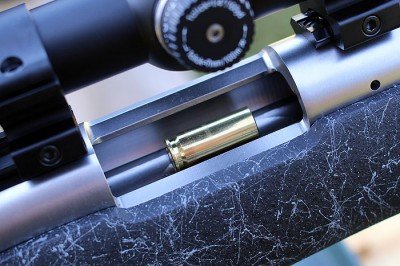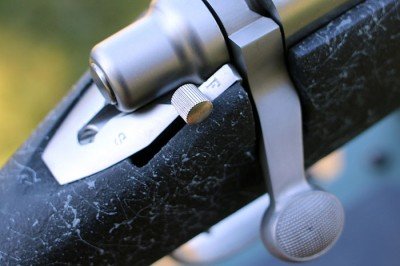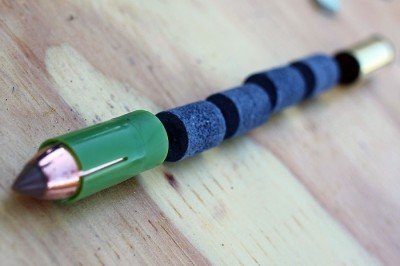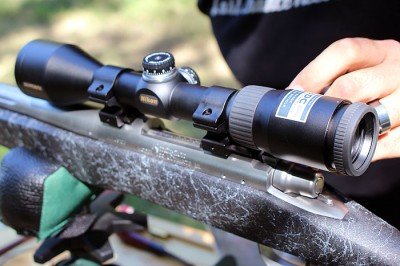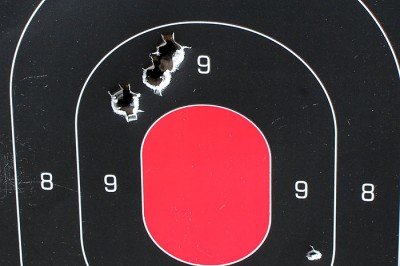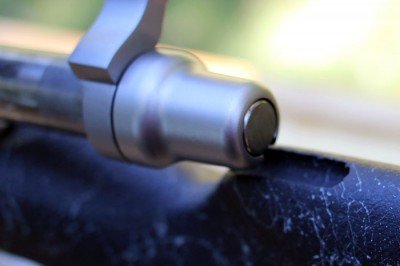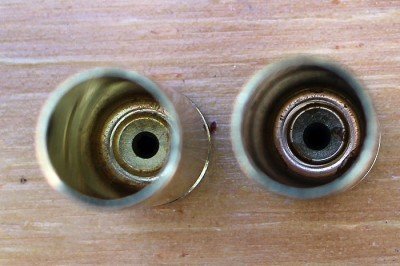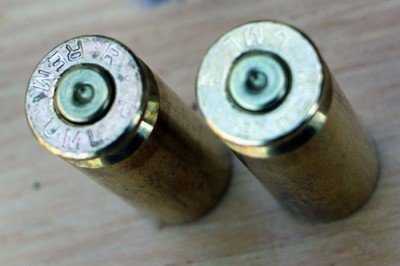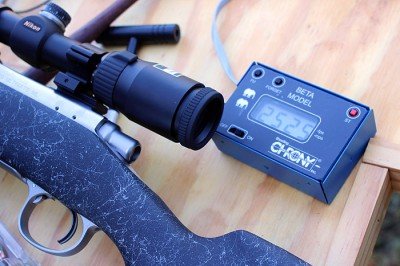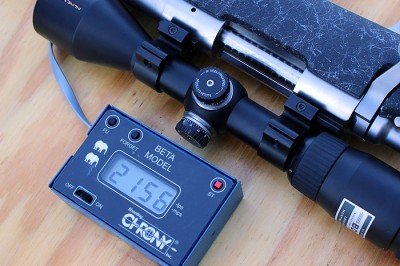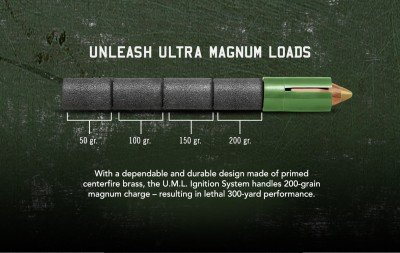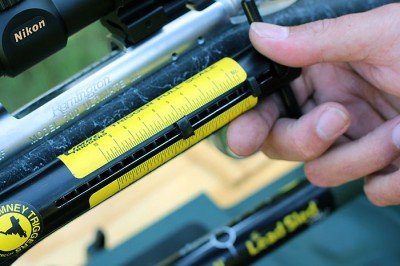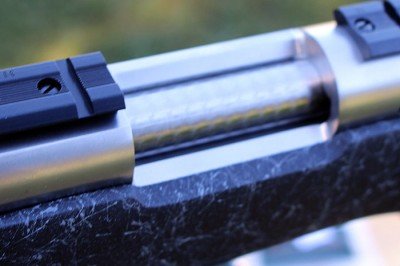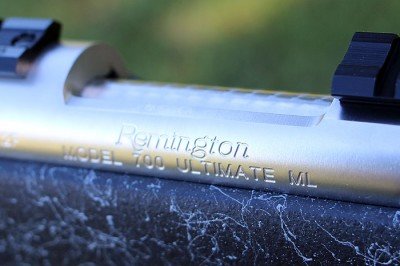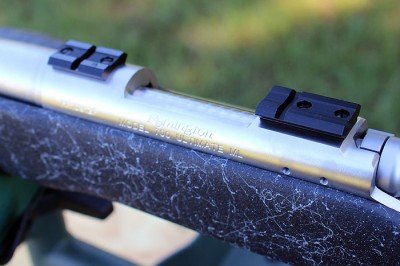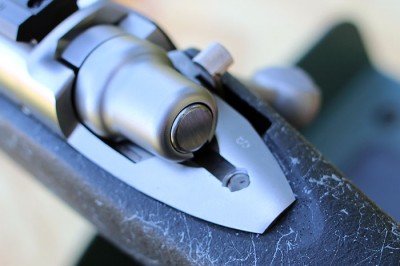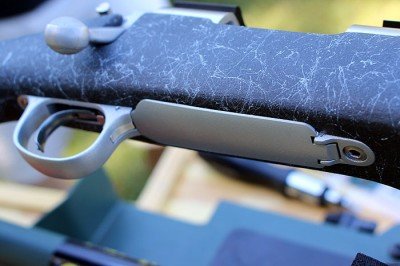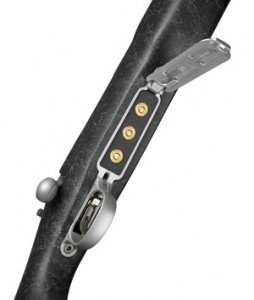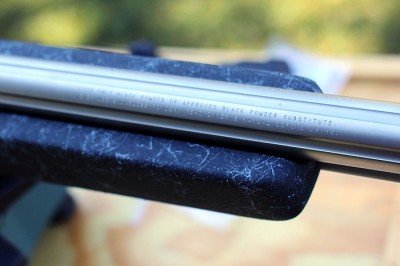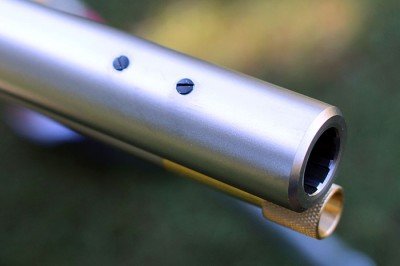[one_half padding=”0 0 0 0px”]
Ultimate Muzzleloader
[/one_half]
[one_half_last padding=”0 0 0 0px”]
[/one_half_last]
Remington released their newest muzzleloader back in April and we got one in time to put it to the test before hunting season here in the South. Remington claims it is the most advanced muzzleloader made to date. I am not going to argue with that statement. This is unlike any front loader I have had my hands on. It is as close to a Remington 700 as you can get, which should open more doors for early season hunters who may have doubts about muzzleloaders. But is it the ultimate?
Bolt Action?
This is not the first bolt action muzzleloader that Remington has made. The earlier versions of the 700 Muzzleloader, which got mixed reviews, have been replaced with the new Ultimate line. One big difference is the ignition system. The new Remington uses primed cartridge cases. That is right, a muzzleloader that uses a cartridge. It is using what is essentially a cut down .308 centerfire cartridge. This case holds a large magnum rifle primer to touch off the charge (with the charge being in the barrel on the other side of the breech plug). The case fits tightly to the special breech plug to form a gas seal. The idea is that you get the fast and reliable lock time of a bolt action rifle, and you will have something larger than a cap to hold when setting up the gun.

The Ultimate Muzzleloader goes to extremes to look, feel, and function like a traditional centerfire.
Remington sells these special cases in a bag of 24. If you have reloading equipment, you can easily pop out the spent primers and seat new ones. The cases are nice and heavy and should hold up to for a long time. And they’re meant to be reused—there isn’t an extractor to rip them free and toss them into the woods. When cycle the bolt, they slide back and are easily retrieved with ungloved fingers. My only hesitation with this proprietary system is that the rifle won’t work without it. While it is easy enough to find them now, it may not always be so. You can reload and/or make them yourself, but it removes the convenience factor.
FFL
Since the 700 UML uses a standard short action Remington bolt and receiver you have to go through an FFL and do a transfer on this rifle. This is the only muzzleloader I am aware of that you have to do this. The thinking behind it is that all you would need to do to make this a standard cartridge rifle is replace the barrel.
I find this rational dubious, as this is not something the average Joe can do in his garage. I would think getting the head spacing right would take a bit of work and tools. But whatever—you have to do a 4473 when buying new. No shipping this one to your door. Will that deter sales? Personally, I doubt it. But it is one more hurdle for a hunter will have to cross. And those of you who may not be able to negotiate the 4473–keep shopping.
Specs
Remington offers the UML in two different models. There is the standard model and the LSS. The LSS sports iron sights and has a laminate stock. Those are the only major differences. The review model is the standard UML which has an MSRP of $999. Is it worth the price tag? If it truly is the Ultimate Muzzleloader—sure. Why not? One thing I will say for the gun up-front is that it feels really good. Still, price is a consideration for many, and you can buy a good Remington 700 centerfire for much less than this. So it will appeal to a niche who really want what the UML provides, which is more time in the field (with the promise of better results).

There is a lot of room around the trigger. I’d like to see tighter tolerances here, if only to keep out dirt.
Both models come with a 26 inch stainless barrel. It is fluted and uses a 1:26 twist. They are .50 caliber and both weight in around 8.5 pounds. The UML sports a Bell and Carlson synthetic stock and is tapped for scope mounts. It uses standard Remington 700 bases. All of this keeps it in line with what I’d expect from a Remington 700.
The two models are outfitted with the Remington X-Mark Pro externally adjustable trigger. It is adjustable from 5 to 2.5 pounds. The review model broke at just under 5 pounds out of the box. The trigger is nice and crisp with no creep.
Fit and Finish
The fit and finish on the UML is great in some places, and just OK in other spots. The stock is nice and has a good texture to help give a positive grip. The satin finish on the stainless is well done and uniform. The area around the safety lever is a little rough. Take a look at the pictures to see what I mean. The stamping on the S and F is different than the other places on the gun. There are also tool marks around the hole under the rear of the bolt. It looks kind of like the hole was cut with a Dremel or something. Other than around the safety, the fit and finish of the rifle is nice and what you expect from the current Remington lines.
The Loads
Remington claims that you can get 2400 f/s or more from the muzzle using 200 grains of Triple 7 powder. This is pushing the Remington branded Barnes 250 gr Spit-Fire sabot bullet. The UML ships with 24 of these bullets.
I fired a number of rounds through a chronograph to see how close these claims are. I also tried some loads with 150 grains of Triple 7 pellets. With 200 grains I averaged closer to 2,500 FPS and with the 150 loads it was around 2,100. Not a whole lot of gain with the extra 50 grains, but it changes the arc of the bullet at farther distances, allowing the gun the reach out farther.
Remington is marketing the UML to be effective out to 300 yards. When taking a muzzleloader out to those distances, every little bit counts. More on the quest for distance below….
Optic
https://www.nikonsportoptics.com/Nikon-Products/Riflescopes/INLINE-XR-3-9×40-Matte-BDC-300.html
The review gun did not come with sights so a scope was in order. I picked a Nikon Inline Model that is designed for muzzleloaders. It is the Nikon INLINE XR. The glass is nice and clear and the picture is crisp. The reticle is sharp and the adjustments are in 1 /4 inch clicks. Once everything was set and zeroed, it held shot after shot. This is a good solid scope that has preset open points especially designed for muzzleloaders. If you are in the market for a scope for black powder you could do a lot worse than the Nikon Inline. The MSPR is around $200.
Shooting
OK, back to the Remington. Once the scope was mounted up, I worked on the zero. It took about 5 or 6 rounds to get it close at 50 yards. Once that was done, I moved out to 100 yards for more realistic adjustments. 3 or 4 more shots at 100 and we were getting consistent kill shots, if not stellar accuracy. Every 3 shots I ran a number of patches down the barrel to keep everything nice and clean.
I shot the UML from my shoulder a number of rounds to get the feel for the recoil. The 150 grain loads felt about like a Remington 700 in .308 while the 200 grain loads upped the recoil to between 30-06 and 7mm Mag levels. I know this is not the most scientific of measurements, but that should give you an idea. Neither load was uncomfortable but it would get fatiguing after awhile. Of course, this is a muzzleloader so loading it for every shot gets more fatiguing than actually firing it.

200 grains makes a nice cloud of smoke. It creates some suspense, since you have to wait for it to clear in order to see where you’ve hit.
All shots made for groups where made off of a bench and led sled. I shot 5 different 3 round groups, cleaning between each group. The best 3 round group was just over 3 inches. This was with a 150 gr load of Triple 7. The 200 gr loads shot closer to 4 inches. This is still within the kill zone on a deer, but frankly I expected a bit more out of this rifle (if only because of the hype). As often as I tried, even from the sled, I wasn’t getting the point of aim impacts at 100 yards, and the margin of error wasn’t consistent. With the same loads, even from the sled, one shot would drift left. The next, with the exact same hold, would drift right. Like I said, at 100 yards the impacts were consistent enough to hunt with the gun. But beyond 150 yards?
Remington advertizes that this is a muzzleloader that is capable of taking game out to 300 yards. The exact line is this: the 200 grain charge produces “lethal 300 yard performance.” That statement is absolutely true. The giant bullet, moving fast, will kill at 300 yards. Yet you have to get the bullet there effectively. If the bullet were to hit a deer at that range, I have no doubt that it could prove lethal. Still, with the 3-4 MOA groups I was getting at 100 yards, I didn’t any need to take it out to 300.If this were a .308, say, I’d have set up a 4’x4′ target at 300 and see just how accurate it is at 300. But with the limited resources (the primed cases, for one), there wasn’t any need to prove the point. I can anticipate the criticism now–“but you didn’t shoot it at 300, so how do you know?” Yeah. The bullets aren’t going to drift wide of the mark at 100, and come back at 300.
At 300 yards the groups should open up to 9-12 inches. That is bigger than where you want to hit on a deer for a lung and heart shot. Once again all of the shots for groups at 100 yards were from a bench rest. Real world hunting is rarely that stable. The UML may well be the Ultimate Muzzleloader for realistic ranges, but I don’t yet have the confidence in the gun to pull the trigger on a whitetail outside of 150 yards.
[one_half]
[/one_half][one_half_last]

This is representative of our 100 yard targets. The accuracy just doesn’t inspire 300 yard confidence.
[/one_half_last]
We’re not finished with this testing. Not by a long shot. I’m not ready to say that it can’t connect at 300 yards, as the advertising suggests. We’re going back out this week with all of the guns we’re going to field this fall. We’ll examine all of the variables again, bore-sight again, and sight in again. If we get predictable impacts in the 2 MOA range at 100 yards, close to point of aim, we’ll stretch it out and update review. As is, we’ll be fielding the UML in a rough patch of Arkansas scrub oaks and secondary growth. The lanes we’ve scouted reach out about 150 yards, tops. We’ve got narrow runs and stable stands, so the UML should perform well enough. And I’m still counting on the 200 grain performance dropping a whitetail or three.

This is a high-tech way to touch off powder. And keep track of these cases–it won’t work without them.
If you’re really looking for long range muzzleloading accuracy, give it a shot. Remington claims that the rifle “consistently shoots groups rivaling centerfire rifles.” I’m an old cynical bastard, and I’m inclined to say that most centerfire rifles don’t perform all that well. But that’s me. The UML is supposed to shoot flat out to 150 yards, and have 23.6 inches of drop at 300 (with the 200 grain powder charge). Maybe that’s true. And even if it isn’t, the UML would seem to have a lot more potential than most of the other muzzleloaders I’ve seen (most of which top out at 150 grains for a recommended charge).
Cleaning
Like all things that shoot black powder or substitutes, you have to clean them after every trip to the range. And I mean clean them. The Triple 7 is a lot cleaner than rear black powder, but it still leaves a big mess. With most inline muzzleloaders, you simply pull the breech plug and start pushing a brush all the way through the barrel. Remington does not recommend pulling the breech plug every time you clean the UML. I can understand why. It is a pain to do. You need a thin walled, deep, 5 /16 socket, an extension, and a wrench. Once you have it out and cleaned, you need to coat the threads with anti-seize and reinstall the plug using a torque wrench to tighten it to 100 lbs. I agree with Remington. I don’t what to do this every time it gets fired. If you are only going to use this rifle seasonally, I’d think you’d be fine to treat it like a traditional muzzleloader and really break it down only after you’ve bagged your limit.
Other than not pushing the brush or patches all the way through the barrel, the UML cleaned up with ease. The way the priming system works and seals, there isn’t a whole lot of crud to clean up behind the breach plug. After a number of passes with a solvent soaked brush to loosen everything up, it didn’t take too long to start pulling clean patches.
Final Thoughts
This is a beast of a rifle. I like the idea behind the priming system. Using the cut down cases is a lot easier then fumbling with a shotgun primer. I can see the ease of the cases being even more useful on cold morning hunts with numb fingers. And that part of the rifle works great. We had no hang fires. The shots went off just as quickly as if it was a centerfire rifle.
That said, the accuracy left a lot to be desired. This rifle was designed and tested with the supplied Barnes bullets. Barnes makes great bullets, so I won’t blame them at all. But there might be a different weight or design that would perform a little better out of this rifle. 3-4 MOA isn’t bad as long as you are hunting around the 100 yard mark. But Remington claims this is a 300 yard hunting rifle. I do not feel that the rifle would do its part at that range. For me, that isn’t enough to dismiss its other qualities. For some it will be.
[one_half]

The Nikon scope is a great addition to the UML. And you’ll need a scope, as it doesn’t come with irons.
[/one_half][one_half_last]
[/one_half_last]
[one_half]
[/one_half][one_half_last]
[/one_half_last]
[one_half]
[/one_half][one_half_last]
[/one_half_last]
[one_half]
[/one_half][one_half_last]
[/one_half_last]
[one_half]

Even from the bench, we had difficulty with the long range shooting that would truly make this the Ultimate Muzzleloader.
[/one_half][one_half_last]
[/one_half_last]
[one_half]
[/one_half][one_half_last]
[/one_half_last]
[one_half]
[/one_half][one_half_last]
[/one_half_last]
[one_half]
[/one_half][one_half_last]
[/one_half_last]
[one_half]
[/one_half][one_half_last][/one_half_last]
